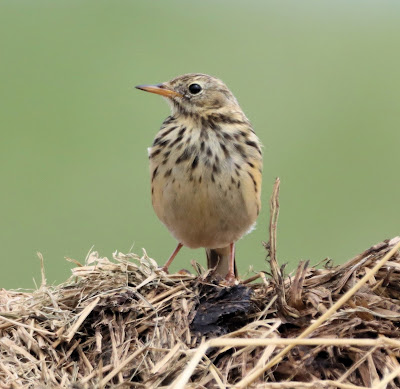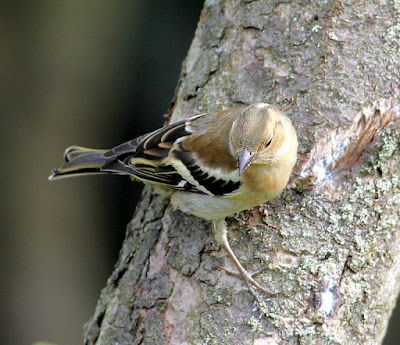What a mixed up week! Two days of wind and rain, a one day window for a ringing session followed by even more rain. And then for Friday the Met Office promised another cloudy, showery, and unsummery day. They were wrong (again) of course as I sat outside in 22°C at 1430 while Julie the mobile hairdresser trimmed what’s left of my thinning hair.
It was Tuesday when Will and I met up for the single ringing session of the week, hoping mainly for juvenile warblers.
The catch of 15 proved slightly disappointing through the lack of variety that the 15 birds gave us - 6 Reed Warbler, 5 Sedge Warbler, 1 Willow Warbler and 3 Blue Tit.
Sedge Warbler
Reed Warbler
Three of the Reed Warbler were recaptures, two from this year and one from 2022.
Reed Warblers are perhaps on of the most site faithful bird species, whereby individual birds will return to the same patch of reedy habitat year after year after spending their winter in middle Africa.
Our single Willow Warbler was a very welcome bright and lemony individual after a poor spring of catching this species.
It seems that many other ringers are reporting the dearth of Willow Warblers this autumn with little in the way of theories or evidence as to the reasons of the species’ scarcity. It is perhaps related to the very dry spring of April/May followed by the sun-baked month of June, all of which resulted in an apparent lack of insects. But now the month of July has been intensely wet, following the weather pattern of recent years, four weeks good followed by four weeks of bad and masses of insects.
Disappointment arose because of the lack of other species around - no Whitethroats, Blackcaps or Garden Warblers when we might have expected at least a single representative of each of their species. Instead, 15 Pied Wagtail, 1 Meadow Pipit, 2 Grey Heron, 2 Little Egret, 1 Buzzard, 4 Goldfinch and 15-20 Swallows.
Grey Heron
Little Egret
Pied Wagtail
Meadow Pipit
Compensation for the slow ringing came by way of sight of a young Yellow Wagtail mixed in with the pied variety, this an early date for a now uncommon species’ autumn dispersal.
The three species of UK wagtails, Yellow, Grey and Pied can cause intense discussion amongst less experienced bird watchers, mainly because all three of the youngsters of each are “grey”. Below is the Yellow Wagtail subject of this post, quite grey above but with a pale yellow wash to the underparts.
While the Pied Wagtail is fairly easily sorted, and leaving aside for now the pitfalls of spring and autumn White Wagtails and Pied Wagtails respectively, the ID differences between Grey Wagtails and Yellow Wagtails causes discussion, not least amongst followers of Another Bird Blog.
In August 2016 and again in July 2021 I decided to remedy this with the post “Yellow Or Grey”, a posting that has since proved to be the most read post in 15 years blogging.
Yellow or Grey
Enjoy the weekend everyone, be it grey, yellow, pied, or better still, sunny,
Linking today to Eileen's Saturday Blog.


















































































